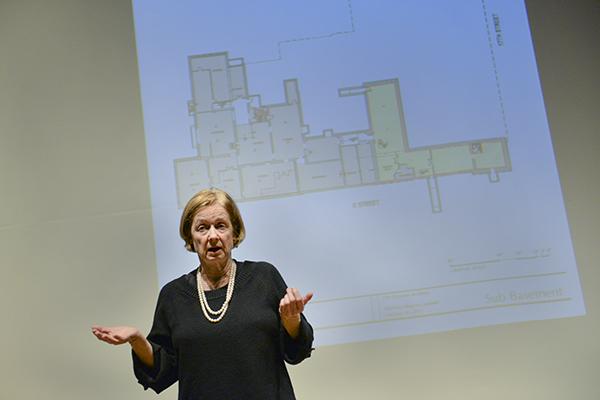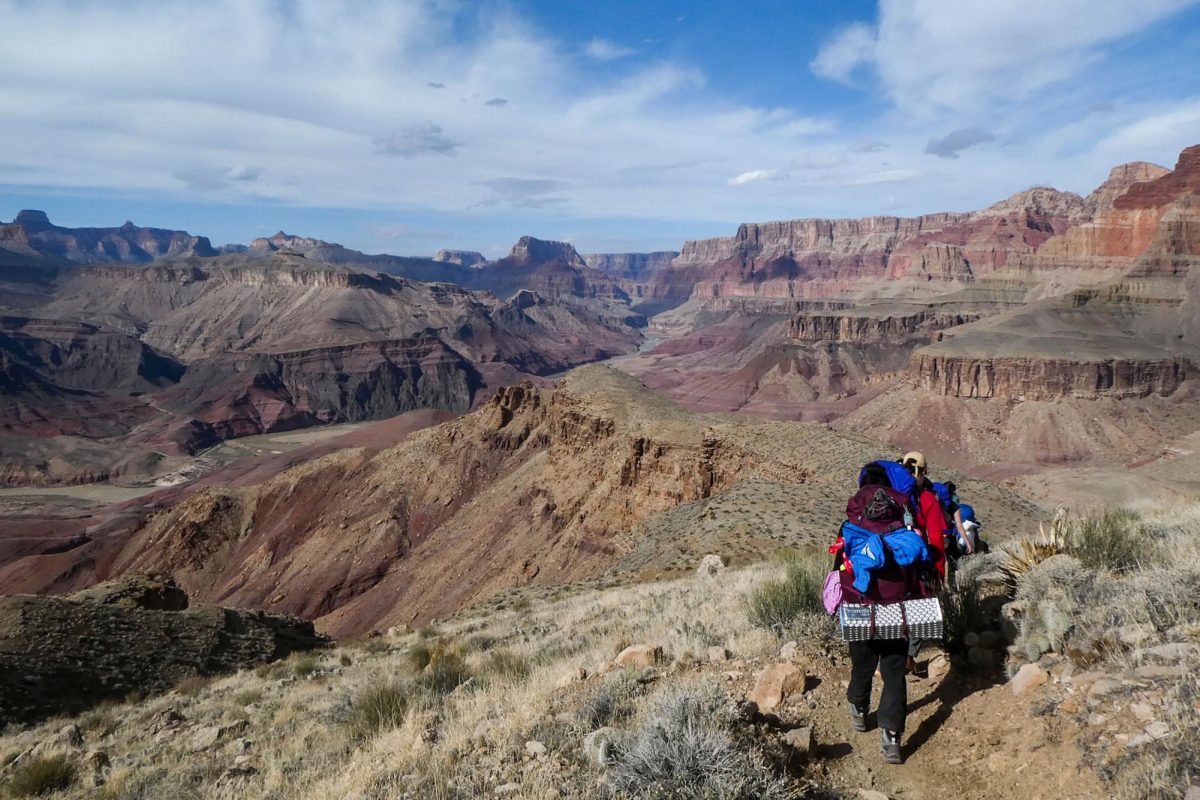Updated: March 5, 2015 at 3:37 p.m.
Officials presented renovation plans for the Corcoran’s 17th Street building at a meeting Monday, also announcing that they will challenge portions of the structure’s historic preservation plan next month.
The renovations will bring the more than 118-year-old building up to code and transform a space that for years has suffered from disrepair. Officials said upgrading the building will make the Corcoran a home for programs that continue to be relevant in the arts education world.
The plans include adding more bathrooms, adding about three dozen faculty offices, moving student galleries and rearranging classroom spaces, said Terry Murphy, the senior associate dean for academic affairs in the Columbian College of Arts and Sciences, which houses the Corcoran School of the Arts and Design.
Murphy presented the changes in a slideshow to about two dozen Corcoran faculty. She said in the future, officials hope to land a naming gift for the building’s ground floor.
Murphy also said all programs in the Corcoran’s Fillmore building in Georgetown will move to Foggy Bottom for the summer. That building is currently on the market for $17 million. Murphy said faculty initially started to discuss renovation options in October.
“Ideas about how the building will be renovated, that was the way GW faculty and Corcoran faculty got to know each other,” she said at the meeting.
But some of those plans could be hampered by the historic preservation proposal meant to maintain the building’s historic nature, which was under review before GW took over the building. University officials will push for changes to that plan, designating less of the building as historic, during a presentation on March 26.
University spokesman Kurtis Hiatt declined to say what administrators would attend that presentation. He said officials are “actively planning” the renovations and will continue to seek feedback from students, faculty and staff. Hiatt also declined to say when the proposed renovations could begin.
The University committed $25 million to renovations when it acquired the art school last winter, but earlier this year, Knapp said the University would ultimately spend about $80 million overall. The initial phase of renovations will include upgrades to heating, cooling and mechanical systems. In the long term, officials said upgrades to the inside of the building will make it possible to house cutting-edge programs.
GW’s deputy general counsel, Charles Barber, said at the meeting that the current proposal, which the D.C. Historic Preservation Review Board is considering, goes “much farther than is needed” by marking large portions of the building’s interior, including the basement and second-floor galleries, as historic and limiting the changes that GW can make.
“Arts education is expanding,” Barber said. “We as GW need some flexibility in designing the appropriate interior spaces to meet the arts education needs.”
He said historic preservation proposals often focus on the facades or lobbies of buildings.
“There are things that GW could do even with historic designation, but they would reduce our flexibility as changes come about in arts education,” Barber said. “It would hinder our ability to make changes to the infrastructure, to adjust to the needs.”
Changes in the University’s plans also included moving the student gallery to a larger area on the E Street side of the building. Murphy said GW’s theater and dance faculty will keep their Foggy Bottom offices, though they could use performance space in the Corcoran building.
Suzanne Klinefelter, the graduate student representative of exhibition design in the Corcoran Student Association, said students are “particularly concerned” about having enough display space for their art once the renovations are completed.
But in the long term, Klinefelter said in an interview that she hopes the renovations and added studio spaces will benefit students who want to display their work.
“When other students are really frustrated with studio spaces being rearranged, I completely understand that frustration, but I also can see the big picture a little more, that [the renovations] will lead the Corcoran further into the 21st century,” Klinefelter said.
David Dent, the executive director of planning and development and the project’s chief engineer, said officials are in the process of picking an architect and have a “short list” of construction managers who they hope to officially bring on board by the end of the month. After those managers are picked, officials will move forward with creating a formal construction timeline, Dent said.
Dent said they hope to bring the building up to code over time while “trying to minimize the impact” on faculty and students.
“We realize there’s a lot of stuff to be done,” Dent said at the meeting. “There are challenges with infrastructure, accessibility, that we’re working through.”
Hiatt also declined to say what architect or construction managers were being considered.
Georgia Deal, a coordinator of printmaking and professor in the Art and the Book graduate program at the Corcoran, said she was optimistic about the renovations after the meeting but knows faculty face a tough road ahead as they continue to get settled.
“The Corcoran faculty are optimistic by nature,” Deal said in an interview. “But we are seasoned and know what the problems can be.”
Deal, who is stationed in the Fillmore building, said she was looking forward to “being under one roof” again when renovations on 17th Street finish and the Fillmore building is sold. She said having a split campus for the last 10 years has been a challenge because the Georgetown location can be difficult for students to access.
“Students had a hard time traveling back and forth, and it hurt programs. Georgetown is not easy to get to,” Deal said.
She also said that moving studio spaces over the summer will make for “a tough next year.”
“It’s like moving a grand piano, there’s so much fine-tuning of equipment when a studio moves,” Deal said.
Colleen Murphy contributed reporting.
This post was updated to reflect the following correction:
The Hatchet incorrectly reported that the University would challenge portions of the Corcoran building’s historic preservation plan in court. It will make its case to the D.C. Historic Preservation Review Board. We regret this error.








